Tasty, moist pork wrapped with half-soft, half-crispy dough, Shanghai Sheng Jian Bao (生煎包, pan-fried pork buns), traditionally served as breakfast, make a great party food.
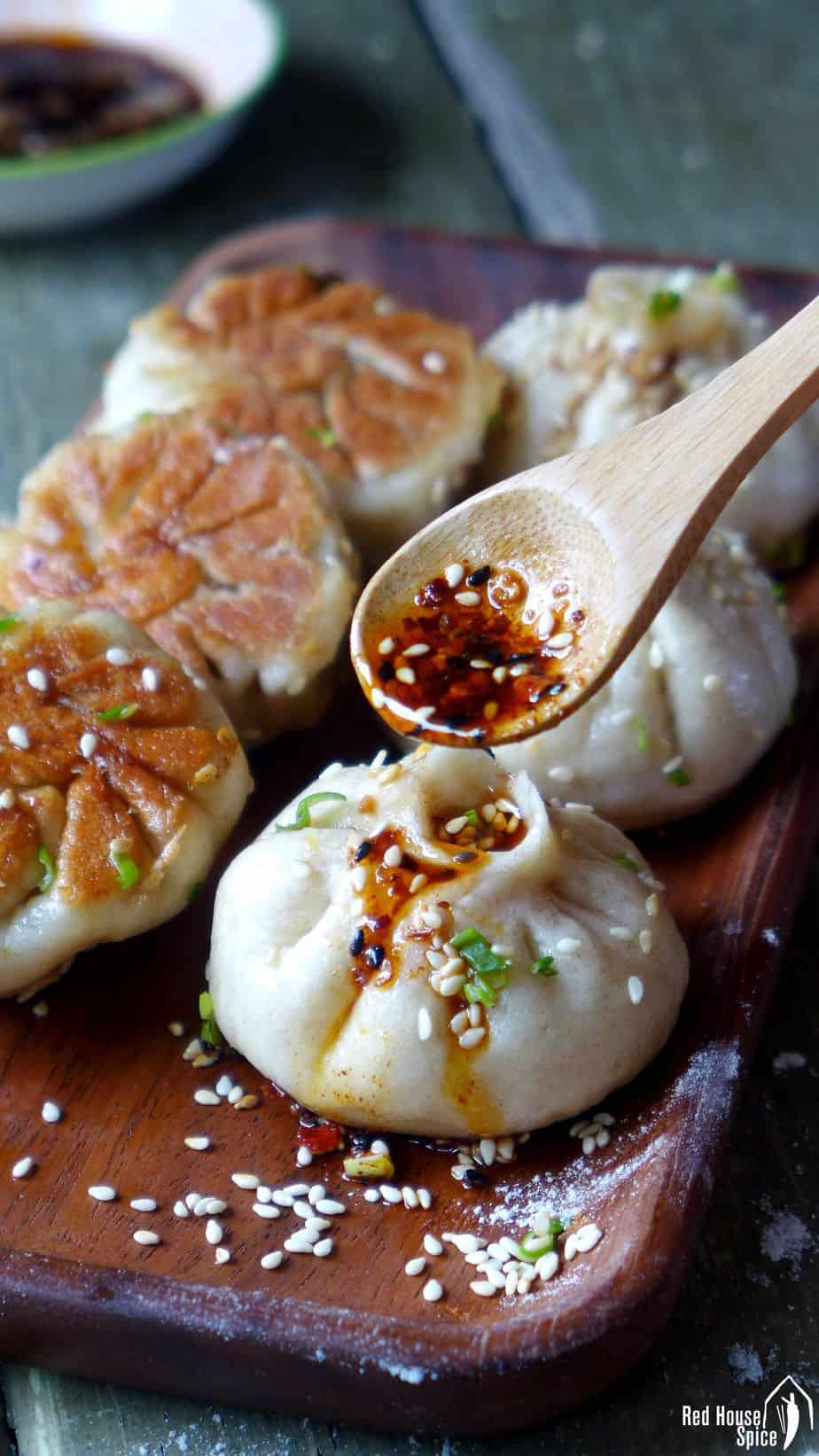
Like many modern cities, Shanghai is full of wonderful choices when it comes to food. I had numerous scrumptious meals during my trips there.
The diversity and creativity of this giant city’s culinary profile was quite impressive. However, the most memorable meal I had there was at a humble, busy breakfast stall which served the local speciality: Sheng Jian Bao/生煎包 (pan-fried pork buns).
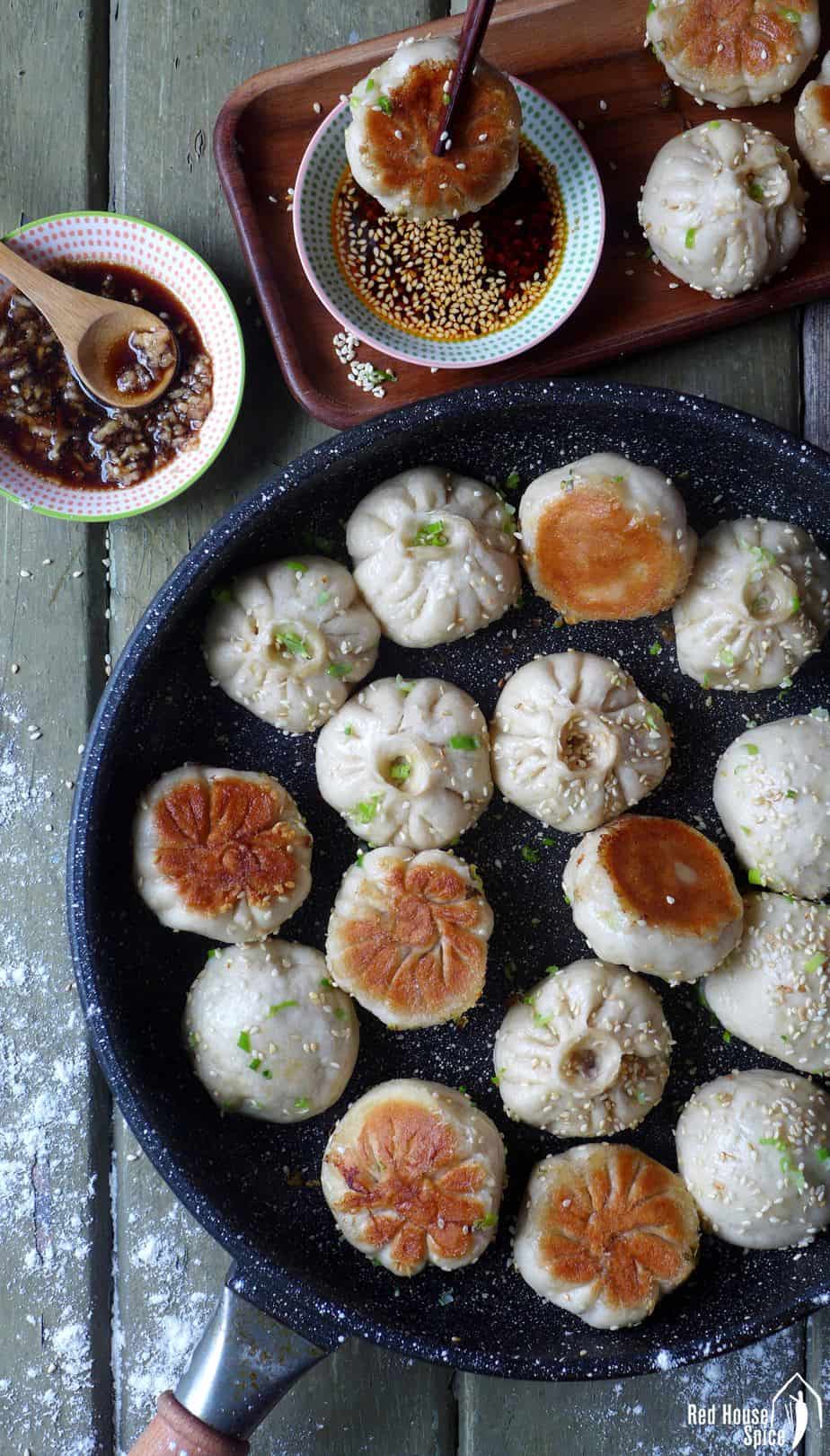
Sheng Jian Bao/生煎包 (aka Sheng Jian Mantou/生煎馒头) is a type of Chinese pan fried bao buns. The wrapper is made from yeast dough and the filling contains minced pork, spring onion and various seasonings. It’s quite small in size, similar to a golf ball or even smaller.
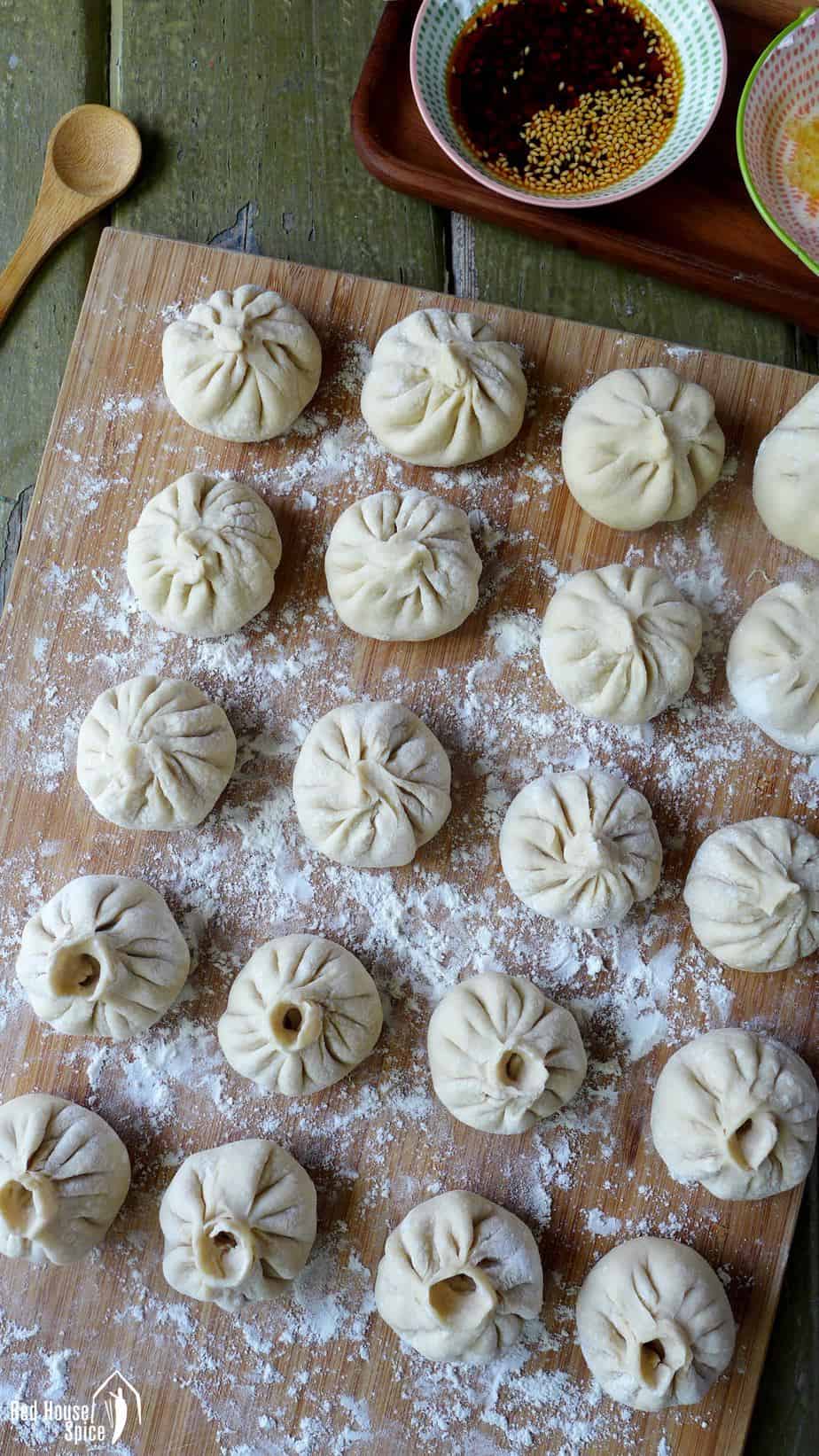
In Shanghai, Sheng Jian Bao/生煎包 (pan-fried pork buns) are traditionally served as breakfast at little cafes and street stalls. They are often cooked in a large pan in front of the queueing customers.
Truly fresh and super tasty, they are simply irresistible! The wrapper has a lovely soft texture with a golden, crispy base . The filling is very flavoursome and moist.
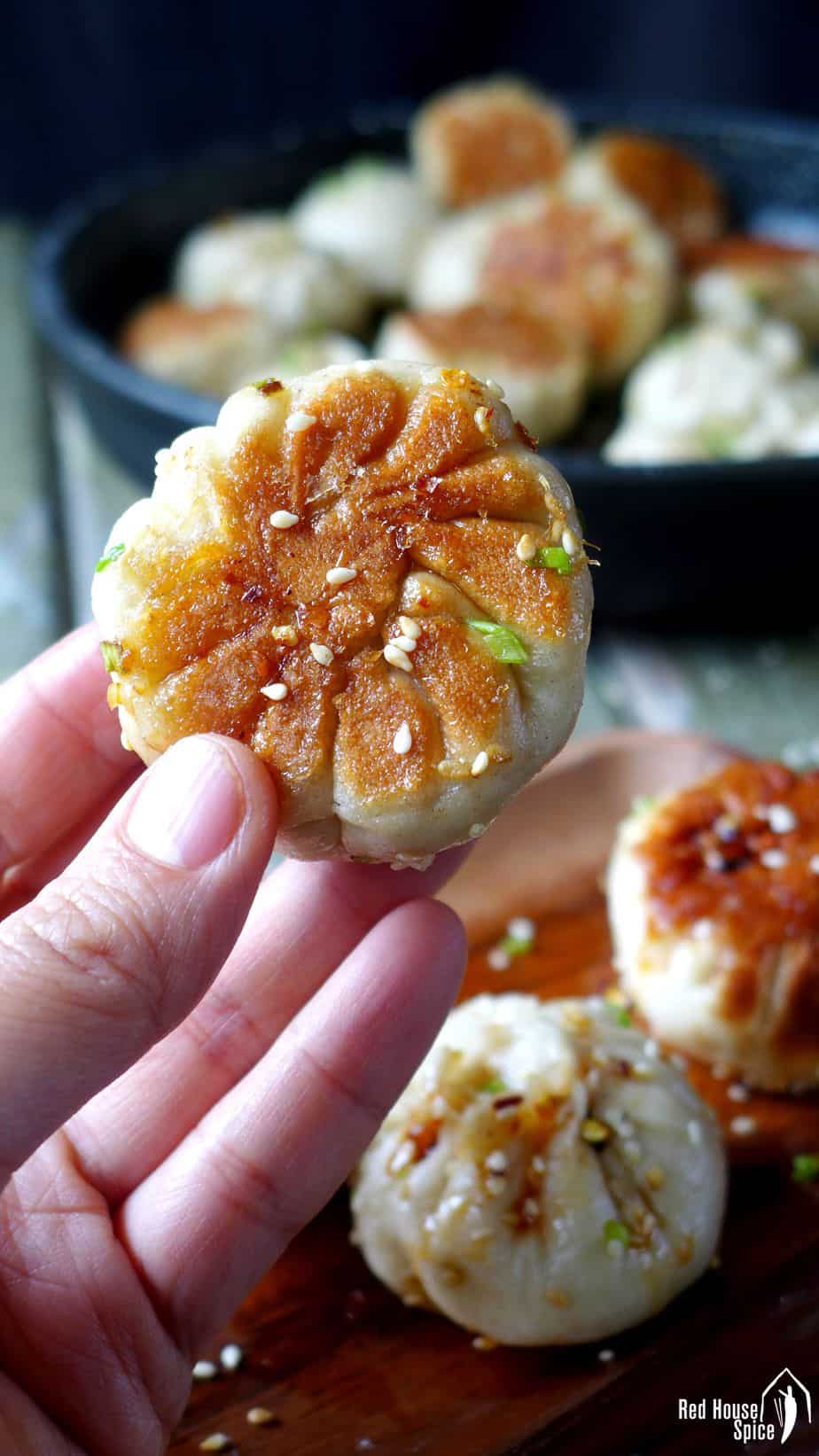
A few years ago, I got a chance to learn the technique of making Sheng Jian Bao/生煎包 (pan-fried pork buns) from a Shanghainese friend. I found it rather simple as it was very similar to how we cook Shui Jian Bao (水煎包, means water-fried buns literally, often vegetarian) in the North-west of China where I grew up. There are five steps to follow:
1. Make the dough. It’s a type of simple yeast dough used in many Chinese dishes, like the one I shared earlier: Spring onion flatbread.

2. Mix the filling. The minced pork is seasoned with spring onion, ginger, light soy sauce, rice wine, Sichuan pepper and sesame oil, etc. In order to make the cooked filling soft and moist, you need to gradually add quite a bit of water (or even better, chicken stock) to the mixture. Stir constantly until no more liquid can be seen.

3. Shape the buns. In this part, you might find it a bit intimidating to seal the buns. It is time consuming if you are not familiar with the folding technique. But I’m sure you’ll soon get the hang of it (please refer to the images above for instructions).
4. Fry the buns. Firstly, crisp the bottom part of the buns in hot oil. Then pour water into the pan and cover with a lid. The steam will help to cook through pretty quickly. A tip: You can either put the folded side facing up or down (As shown in the photos below, I cooked a panful in two ways). Just remember to securely seal the top if you prefer the latter to avoid any juice leaking from the filling.

5. Sprinkle the garnish. I particular like this final touch. Sprinkle finely chopped spring onion and toasted sesame seeds onto the buns at the very last stage of cooking. The remaining steam in the pan helps these sprinkles to stick onto the wrappers. Not only does it looks pretty, it also adds extra flavour to the buns.
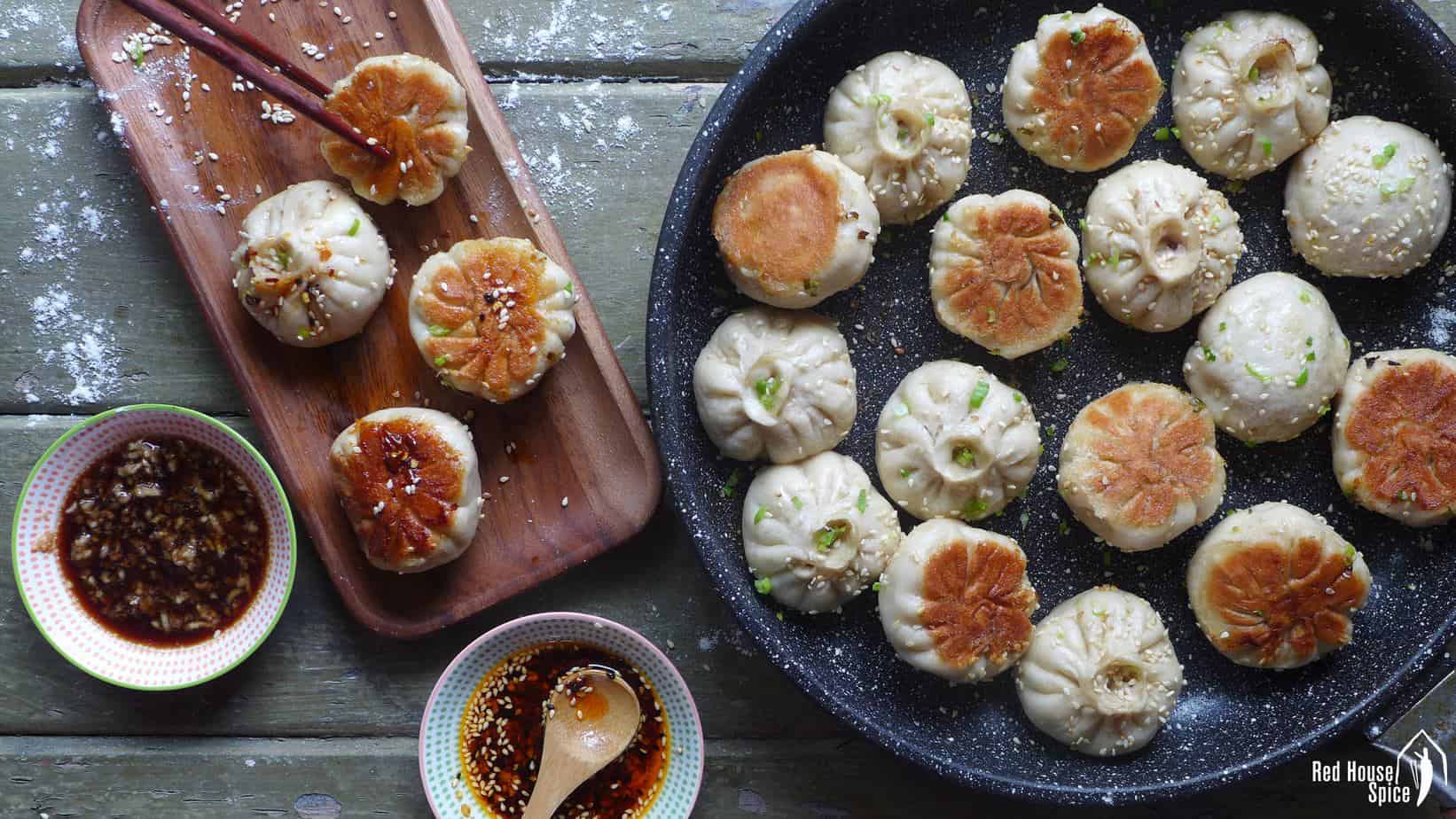
I often make Shanghai Sheng Jian Bao/生煎包 (pan-fried pork buns) for parties. It’s a perfect finger food that’s loved by young and old. If you wish, prepare some dipping sauce on the side. For example, you can use the dressing recipes for dumplings, etc.. Don’t forget to add a dash of homemade chilli oil if you fancy spicing up the buns.
Other bao recipes
Looking for more bao recipes? here are some popular ones to try:
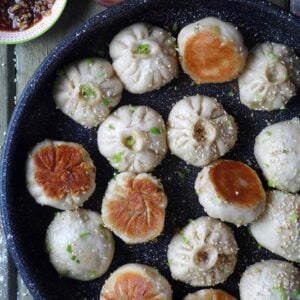
Sheng Jian Bao: Pan-fried pork buns (生煎包)
Ingredients
For the wrappers
- 250 g all-purpose flour - about 2 cups (see note 1)
- 1 teaspoon sugar
- 1 teaspoon dried instant yeast - see note 2
- 140 ml lukewarm water - about 9 tbsp
For the filling
- 250 g minced pork - 9oz
- 2 tablespoon spring onion - finely chopped
- ½ tablespoon ginger - minced
- 2 teaspoon light soy sauce
- ½ teaspoon Shaoxing rice wine
- ½ teaspoon sesame oil
- ¼ teaspoon salt
- 1 pinch ground Sichuan pepper - or Chinese five-spice powder
- 5 tablespoon water - or chicken stock
For frying
- 1 tablespoon cooking oil
- 240 ml water - about 1 cup
For garnishing
- Toasted sesame seeds
- Spring onion - finely chopped
Instructions
Prepare the dough
- In a large bowl, mix flour, yeast and sugar. Pour in water little by little while stirring with a pair of chopsticks (or a fork).
- Then knead with your hand until a smooth, elastic dough forms (see note 3). Cover the bowl with a wet kitchen towel.
- Leave to rise in a warm place until double in size. It will take between 40 minutes to 1.5 hours depending on the room temperature.
Mix the filling
- Put all the ingredients for the filling (except for water/stock) into a large bowl.
- Swirl constantly in the same direction while gradually adding water/stock spoon by spoon into the mixture.
Shape the buns
- Knead the dough on a floured work surface until it goes back to its original size.
- Divide it into 20 equal portions. Roll each piece into a disk-like wrapper.
- Hold the wrapper in the palm of one hand. Place some filling in the middle. Use the other hand to fold the edge anticlockwise by pinching with thumb and index finger until the bun is completely sealed (please refer to the images above).
- Leave to rest for 15 minutes before frying.
Fry the buns
- Heat up oil in a frying pan over a high heat. Place in the buns (see note 4 & 5).
- When the bottom part becomes golden brown, pour in water then cover with a lid.
- Uncover when the water evaporates completely. Sprinkle sesame seeds and spring onion over.
- Cook another 30 seconds or so to crisp up.
NOTES
NUTRITION
NUTRITION DISCLOSURE: Nutritional information on this website is provided as a courtesy to readers. It should be considered estimates. Please use your own brand nutritional values or your preferred nutrition calculator to double check against our estimates.


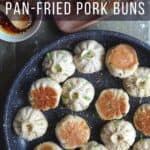
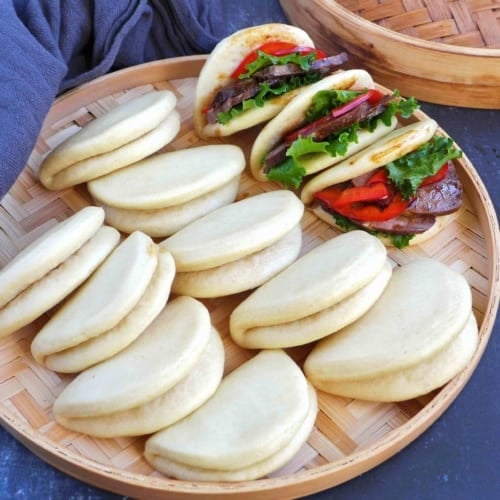
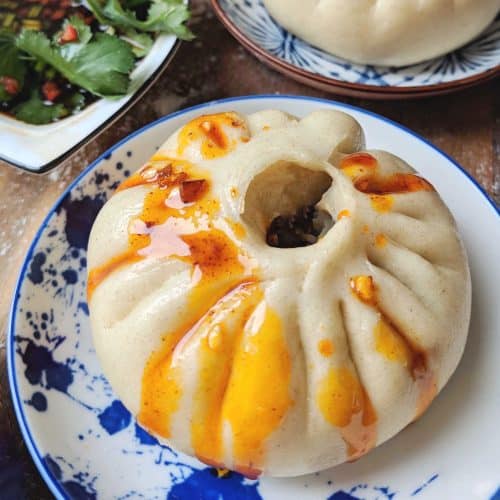
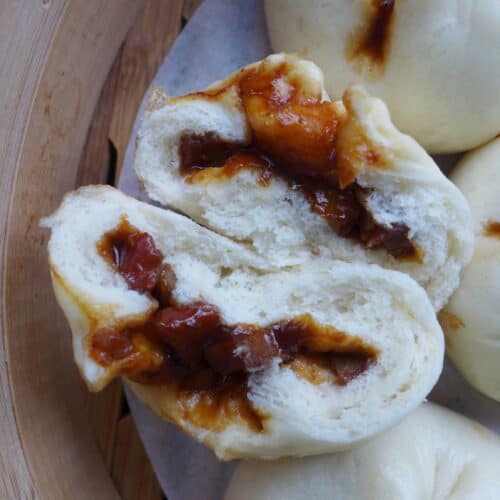
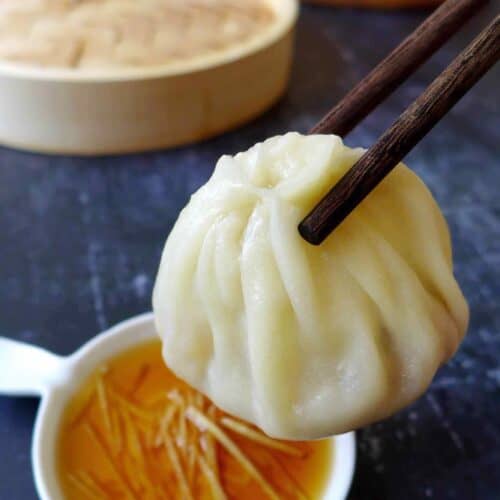
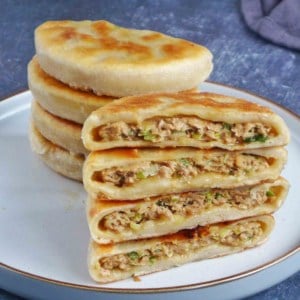
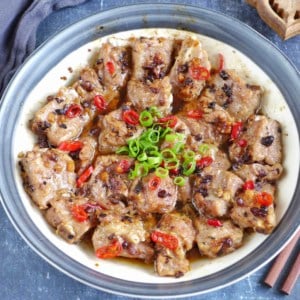

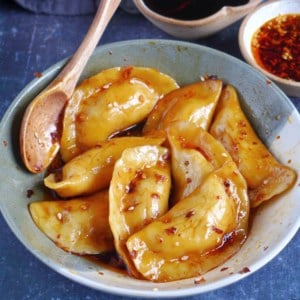
Hi Wei, I tried this recipe. My family enjoy it very much. Thank you for sharing this wonderful recipe. And also thanks for the step by step and clear instructions. Take care and stay safe 😊
You’re welcome Joyce! Glad my recipe worked well for you.
Hi Wei, how do I know if the meat within is cooked or not?
If you follow all the steps explained in my recipe, the meat in your bao will be cooked for sure.
Made this two days ago. I was a little apprehensive of this recipe, since I’ve had this at restaurants. (It looks difficult to cook) Used 5 Spice alternative which my kids LOVED and devoured so quickly, I was so surprised. I can’t master the pretty pleats (yet) but practice makes perfect. I will definitely make again. This steamed up a lot faster than I thought.
That’s wonderful to hear! It’s not difficult to make once you know the tricks. Wish you a fun time practising pleating skills!
Hi Wei, may I ask if i can steam the buns then freeze it, and use the same pan fry method like you did to refresh it when I need to get them ready? I just don’t want to freeze raw meat. Thank you!
Yes, cooked buns freeze very well. Defrost them in the fridge then pan-fry the same way. Just remember to reduce the water pouring in the pan as the buns are already cooked. Happy cooking!
Wei, just wanted to thank you for this recipe! My first attempt at bao, and my friends loved it 🙂
Also wanted to give a shout out to you for still replying to all these comments, it’s really heartwarming! Happy new year!
Happy New Year to you too Jonathan! So happy to hear that you enjoyed this dish. Wish you a great time in your kitchen in 2021!
Hello Wei,
Is it possible to make the dough in advance and prepare the filling when you want to make the buns?
I did read that you can make the buns in advance, freeze them and eat them when you want. But I prefer not to freeze meats.
With kind regards,
R
Since this dough involves yeast and proofing process, you can not make the dough in advance.
These were delicious and reheated nicely the next day with a little water in the pan, as suggested in another comment. I think my folding needs some practice – I couldn’t get it completely sealed at the opening but they were still presentable and delicious. Thank you for the recipe! I looked for a Rice Noodle Roll (cheung fun) recipe on your site but couldn’t find one – I think that will be my next Chinese cooking project 🙂
Wonderful that you’ve enjoyed making them! Cheung Fun is on my to-write list. Hopefully I’ll publish it in the near future.
Hello Wei, thank you for this recipe! I will be making these this weekend!
With these baos, can I put them on parchment paper and steam instead of pan frying? Thank you in advance for any assistance!
Yes, you can. I have a post on Steamed Bao Buns which includes many cooking tips. You might find it helpful. Happy steaming!
Hello Wei!
My mom is from Shanghai and the other day she was reminiscing about all the food from her childhood. It prompted me to ‘Google’ Xiao Long Bao, and that’s how I found you! 🙂 For a novice like me, I think they came out fine. My mother declared that they were excellent and she knew exactly what they were LOL!
Now, I’d like to try again, but double the recipe. How much yeast should I use? Instinct is telling me that I should not double the yeast. How much yeast should I use for 4 cups of flour?
Thanks again!
Hi Carolyn! You’ll need to double the yeast for double volume of flour. If not, you’ll need longer time for proofing. Happy cooking!
Thank you for this easy recipe! Our sons love it
My pleasure to share!
Can the buns be made in advance and frozen until when required? And cooked in the recommended method?
Hi Micheline! You can freeze the buns after they are assembled and rested. You don’t need to defrost before cooking. Use the same method to fry. It will take a little longer to cook through.